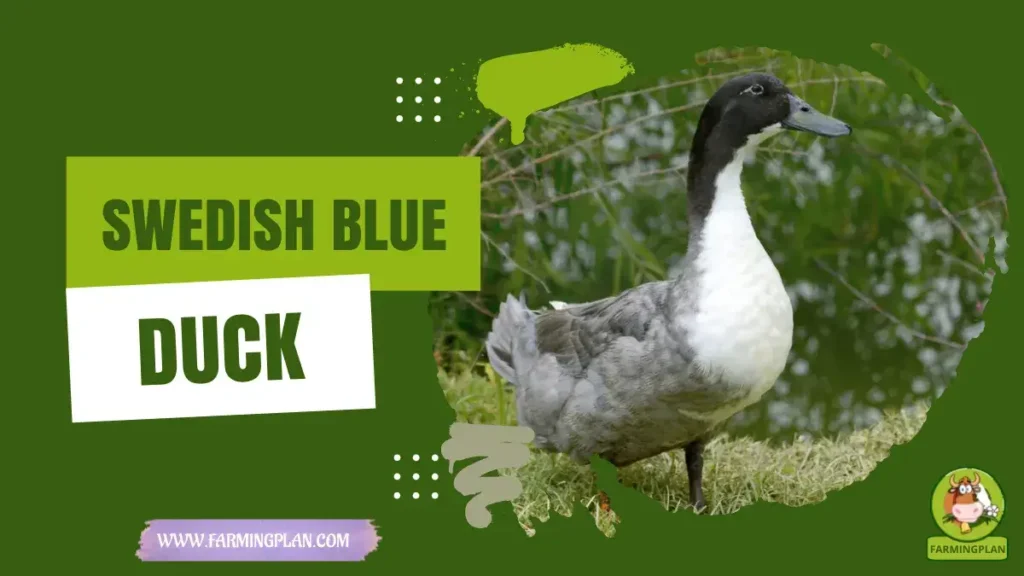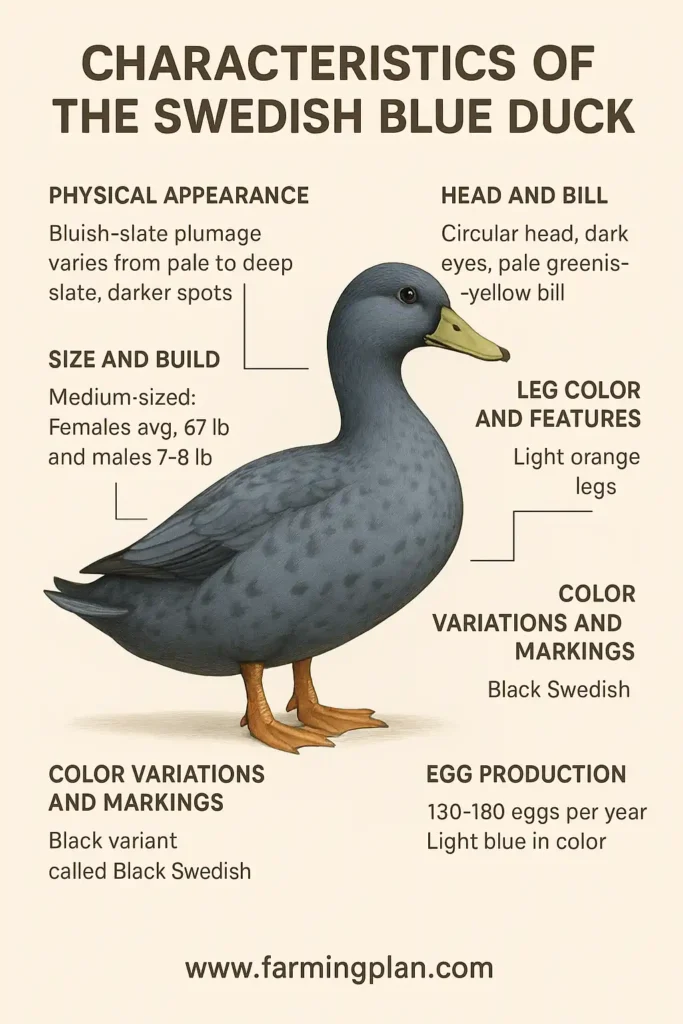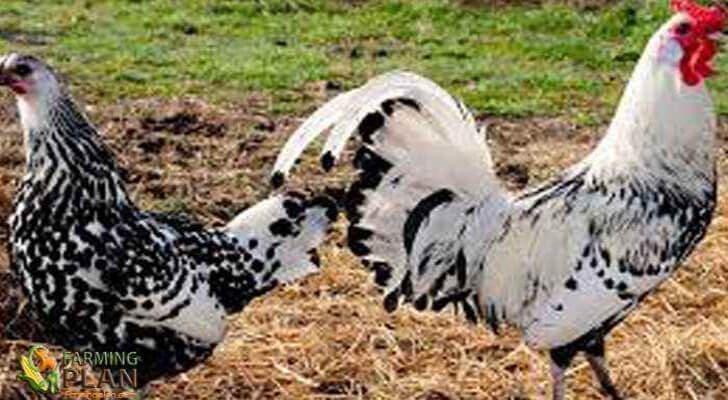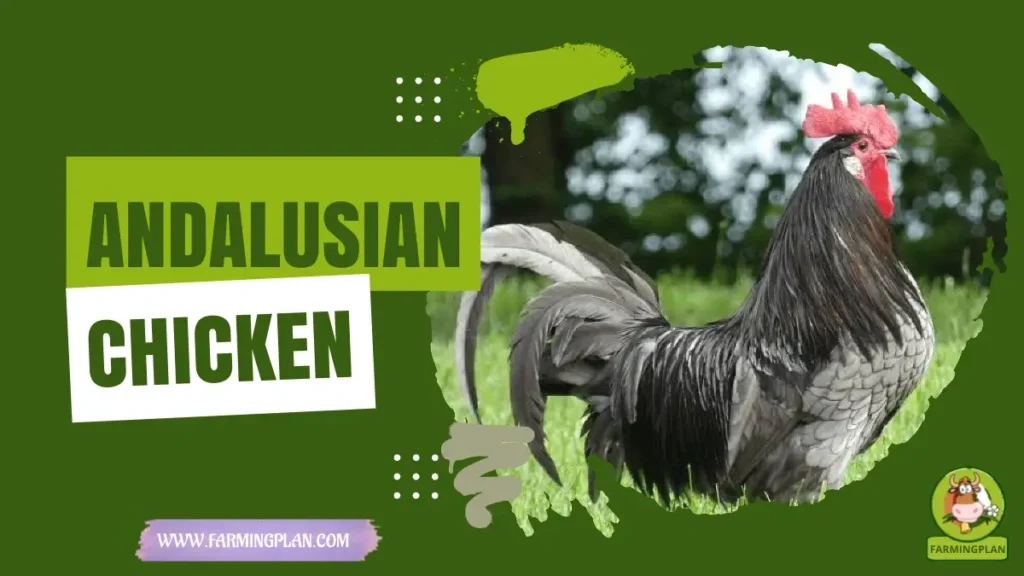The Swedish Blue Duck is a friendly and versatile breed distinguished by their beautiful blue-colored feathers and peaceful nature. They are popular for their robust temperament and excellent egg-laying quality, and as a domestic duck breed, they are highly appreciated by pet owners, farmers, and breeders. Swedish Blue Ducks are medium in size, with stunning bluish slate-colored feathers and a gentle disposition, making them suitable for family pets and overall-purpose farming. Due to their prolific egg-laying and ease of adaptation to various climates, these lovely birds are a perfect addition to any farm yard or backyard flock. Whether you are a seasoned duck keeper or a beginner, the Swedish Blue Duck will be an invaluable companion.

History & Origin of the Swedish Blue Duck

The Swedish Blue Duck, originating in Sweden, has a rather deep history dating back to the late 1800s. The breed was created as a dual-purpose duck for egg laying and meat quality. Swedish farmers particularly raised these ducks for their hardiness and ability to withstand and be hardy in colder weather and, therefore, keep well in the Nordic climate.
Development as a Dual-Purpose Duck
Swedish Blue Ducks were initially bred for egg and meat production, making them versatile on farms. The fact that they lay many eggs and provide a good source of meat made them very popular with Swedish farmers. The fact that they are a dual-purpose breed is one of the primary reasons that hobbyists and small-scale farmers still demand them.
Hardiness in Cold Climates
One of the main reasons the Swedish Blue Duck was created is that it is resistant to the cold and can handle severe, cold winters. Sweden’s cold climate required a duck breed that could thrive in such extreme weather, and the Swedish Blue Duck fit into this perfectly. This resistance to cold weather has become a characteristic of the breed, making it so much suited to farms in the colder regions.
Recognition and Spread to the United States
Over time, the Swedish Blue Duck gained recognition for its distinctive bluish-slate-colored feathers and calm temperament. As its reputation spread, the breed went to the United States, where American farmers and breeders embraced it. Its ability to provide both eggs and meat and its friendly nature made it a desirable choice for general-purpose farm ducks.
Current Status and Rarity
Although the Swedish Blue Duck has become less common in recent years, it is still considered a prized breed due to its unique color, practical uses, and friendly disposition. Despite its declining popularity, serious breeders and enthusiasts continue to work towards keeping this wonderful breed alive so that it will remain a valuable addition to small-scale farms and poultry hobbyists worldwide.
Characteristics of the Swedish Blue Duck

The Swedish Blue Duck is a medium-sized bird known for its distinctive bluish-slate color and calm, friendly nature. In addition to its striking appearance, this breed is known for its hardiness, making it well-suited to various climates and farming conditions. Below, we’ll explore the physical characteristics, variations, and unique traits that make the Swedish Blue Duck a standout breed among poultry enthusiasts.
Physical Appearance and Plumage
The most conspicuous feature of the Swedish Blue Duck is its blue slate-colored feathers. Their beautiful color can range from pale grayish-blue to deep slate, giving the duck a clean and refined appearance. The feathers are slightly different, and individual birds may have some darker or lighter spots, making them more beautiful and unique. Their soft feathers and relatively slim bodies make them both a good-looking and functional breed.
Size and Build
Swedish Blue Ducks are medium-sized birds, with females typically weighing 6 to 7 pounds and males around 7 to 8 pounds. Their compact and stocky bodies make them sturdy and efficient at foraging. While not as large as some commercial duck breeds, they are well-suited for small to medium-sized farms and backyard settings due to their manageable size.
Head and Bill
Swedish Blue Ducks feature a circular, compact head with a blue or grayish hue, complementing their body color. Their bills are pale greenish-yellow or sometimes black, depending on the individual bird. Their distinctive bill shape makes them easily identifiable, contributing to their unique look. Their eyes are typically dark, which contrasts nicely with their feather color.
Leg Color and Features
The legs of the Swedish Blue Duck are generally a light orange or yellow, giving a bright contrast against the slate-colored feathers. Its legs are stout and muscular, holding the body of the duck in place as it walks around while foraging or swimming. This also accounts for its overall hardiness and its fitness.
Color Variations and Markings
While the Swedish Blue Duck is known for its bluish slate plumage, some ducks may have slightly different color patterns or markings. A few individuals might display irregular color patterns, including a light gray or even darker blue head. The breed is also found in a black variant called the Black Swedish, which shares many of the same traits but has an entirely different feather color. Both blue and black variants are highly sought for their beauty and utility.
Distinctive Qualities of Swedish Blue Ducks
Aside from their appearance, Swedish Blue Ducks are also famous for their docile nature and amiable disposition. These ducks are said to be gentle, making them an excellent choice for families or novice duck keepers. Being gentle, they are able to live with other animals, even chickens, and can thrive in mixed flocks. This makes them an excellent choice for both farmyards and backyard flocks.
In addition to their temperament, Swedish Blue Ducks are also excellent foragers, typically foraging in small gardens or fields. This makes them an ecological choice for farmers and adds to their popularity as they keep their land in balance.
Swedish Blue Ducks as a Reliable Egg Producer
Swedish Blue Ducks are also well known for laying performance. On average, they lay 130-180 eggs per year and thus serve a good reliable supply of eggs to home family tables or home egg commercial sale. The eggs are most often pale light blue, but pearl gray is also referred to. The excellent egg quality and good egg production render them an excellent option for individuals in search of an effective and beautiful duck breed for egg laying.
Read More: Magpie Duck: British Breed of Domestic Duck
Nature and Temperament of the Swedish Blue Duck
Swedish Blue Ducks are known for their calm and friendly temperament. These ducks are generally easy to handle, making them ideal for families, first-time duck owners, and small farms. They enjoy human interaction and are not easily startled, making them an excellent choice for backyard flocks.
Gentle and Social Behavior
These ducks are social and get along well with other animals, including chickens, which makes them versatile in mixed-flock settings. They are often seen foraging peacefully together, showcasing their gentle nature.
Adaptability and Hardiness
Thanks to their hardiness, Swedish Blue Ducks are adaptable and can thrive in cold and moderate climates. They are particularly well-suited to farms in colder regions, where their resilience is valued.
Great for Families and Hobbyists
With their friendly and laid-back demeanor, Swedish Blue Ducks make excellent family pets. They are easy to manage and can even become accustomed to human presence, making them a joy for hobbyists and farmers alike.
Read More: Barbary Ducks: Why They’re Perfect for Your Farm
Food and Diet of the Swedish Blue Duck
The Swedish Blue Duck is an active forager and requires a well-balanced diet to maintain its health and productivity. Their diet should include a mix of grains, greens, and access to fresh water. Below is an overview of what to feed them to ensure they stay healthy and continue to thrive.
Key Components of Their Diet
Swedish Blue Ducks enjoy a variety of foods. Their diet should include high-quality commercial duck feed, which provides the necessary nutrients, and grains like corn and oats. They will also benefit from leafy greens like lettuce and kale and occasional kitchen scraps like vegetable peels. It’s important to avoid feeding them salty or processed foods, as this can lead to health issues.
Foraging and Free-Range Diet
These ducks are excellent foragers who can graze for insects, worms, and plants in open areas. If you have a safe, enclosed area, they can forage for natural food sources, which will supplement their diet. Their ability to forage for food makes them an excellent choice for sustainable farming, as they can help keep your garden or field free from pests.
Water Consumption
Access to clean, fresh water is essential for Swedish Blue Ducks. They use water not only for drinking but also for dipping their bills, which helps with digestion. Providing a shallow pool or small pond will keep them happy and healthy, as ducks are natural swimmers and enjoy water-based activities.
Egg Production and Calcium
To support optimal egg production, Swedish Blue Ducks need sufficient calcium. This can be provided through crushed oyster shells or a calcium supplement in their feed. Proper calcium intake is crucial for strong eggshells and overall health.
Treats and Snacks
While Swedish Blue Ducks enjoy treats like mealworms, fruit, and grains, it’s important not to overfeed them with snacks. These should be offered in moderation to avoid obesity or health complications. Keep their main diet focused on well-balanced feed and natural foraging.
Providing a varied and nutritious diet can help your Swedish Blue Ducks remain healthy, productive, and happy throughout their lives.
Read More: Saxony Duck Advantage: Healthier, Happier & More Profitable
Purpose and Usage of the Swedish Blue Duck
The Swedish Blue Duck is a true utility breed, loved for its eggs and meat. Farmers and backyard keepers value this duck for its usefulness, gentle nature, and attractive appearance.
Egg Production Qualities
Swedish Blue Ducks are steady layers, producing about 130 to 180 eggs annually. Their eggs are usually white or slightly tinted and medium to large. These ducks are consistent egg producers, making them an excellent addition for families or small farms needing a reliable egg source.
Meat Production
Along with eggs, this duck is known for its flavorful meat. Though not the largest duck breed, its stocky body yields good beef. Its size and hardiness make it a practical choice for farmers seeking a dual-purpose bird.
Ideal for Small Farms and Homesteads
Swedish Blue Ducks are often found on small farms, homesteads, and backyard setups. They are calm, hardy, and easy to manage, which makes them suitable for beginner duck keepers or families with children.
Popular in Shows and as Pets
Their unique blue feather color and gentle behavior make them favorites at poultry shows and among hobby breeders. Their soft personalities make them great as companion animals or pets in rural and suburban homes.
Whether you’re raising ducks for eggs and meat or simply enjoying their company in your backyard, the Swedish Blue Duck offers excellent value and versatility.
Special Features of the Swedish Blue Duck
The Swedish Blue Duck stands out with its beautiful appearance, friendly behavior, and rare traits, making it valuable and eye-catching.
Unique Blue Feather Color
One of the most striking features is its bluish-slate body color. No two Swedish Blue Ducks look exactly alike because of their irregular markings. Genetics influences feather color, resulting in varying shades of blue, black, or even splash (a mix of white and gray). A white bib on the chest adds to their charm.
Cold-Weather Resilience
These ducks are built for colder climates. Their dense feathers and hardy nature help them handle chilly conditions better than many other duck breeds, making them perfect for farmers living in regions with long winters.
Gentle Temperament
Swedish Blue Ducks are calm, confident, and gentle. Their easygoing nature makes them ideal for families, beginner duck keepers, or anyone wanting a low-stress, manageable duck.
Strong Foragers
They’reSwedish blues are also excellent foragers. They love to roam and search for bugs, slugs, and greens. This trait makes them helpful in gardens and fields, where they can naturally reduce pests.
Rare and Recognizable
Due to limited availability, Swedish Blue Ducks are considered a rare breed. Their stocky body, circular head, and dark beak give them a recognizable, lovable look. Many flock owners find them among the most beautiful ducks to raise.
These special traits make the Swedish Blue Duck not just a practical farm bird but a unique and delightful addition to any duck-loving household.
Health Issues and Prevention in Swedish Blue Ducks
Swedish Blue Ducks are generally hardy, but like all domestic ducks, they can face specific health issues. Keeping them healthy is simple with the proper care and attention.
Common Health Concerns
These ducks may suffer from common duck problems like bumblefoot (a foot infection), wet feathers (when feathers lose waterproofing), and parasites such as lice or mites. Overgrown nails and cross beaks may also appear in some birds.
Proper Nutrition is Key
Poor nutrition can lead to weak bones and egg-laying issues. Ensure your ducks get a balanced protein and calcium diet—especially for laying females. Fresh greens, grains and clean water help keep them in top shape.
Clean Living Conditions
Clean water and dry bedding are essential. Wet, dirty coops lead to infections and sickness. Change bedding often, provide a clean water source, and ensure they have enough room to move comfortably.
Vaccination and Vet Care
While ducks don’t need as many vaccines as chickens, getting advice from a vet about local disease risks is smart. Regular health checks can catch issues early.
Protect from Predators
Predators like raccoons and foxes can harm or stress your ducks. Use secure fencing and lock up the coop at night to keep them safe.
“Who Knew A Blue Duck Could Bring So Much Joy—and Breakfast? The Swedish Blue Is Your Feathered Friend With Flair!”
Step-by-Step Swedish Blue Duck Care Guide
The process of caring for Swedish Blue Ducks provides enjoyable rewards to their keepers. The proper method to raise ducks will be shown in an easy-to-follow step-by-step format to both farmers and first-time pet owners.
Step 1 – Choose Healthy Ducklings
Get your ducklings from trusted places like Metzer Farms or local breeder flocks. Look for active ducklings with clean eyes and smooth, fluffy feathers.
Step 2 – Set Up a Cozy Brooder
Use a warm brooder with soft bedding and a heat lamp. Keep the temperature around 90°F for the first week, then lower it by 5°F each week until fully feathered.
Step 3 – Feed the Right Diet
Give duck starter feed with niacin for strong legs. Avoid feeding chicken-only food—it lacks the nutrients ducks need. Fresh greens and some chopped vegetables are great extras.
Step 4 – Provide Clean Water
Use a shallow dish or a deep enough bucket for them to dip their bills. Clean water helps them eat, breathe, and stay healthy.
Step 5 – Create a Safe Outdoor Space
Let them explore outside once they’re feathered (around 4–6 weeks). Provide a secure coop with lots of space, about 4 square feet per duck, and protect them from wind and rain.
Step 6 – Let Them Forage and Swim
Swedish Blues love to forage! Give them grass, bugs, and a small pool or water to splash in. Always supervise their swimming time to avoid chilling in young ducks.
Step 7 – Keep the Coop Clean
Change bedding often and clean their water and food dishes daily. This prevents diseases and keeps the ducks happy.
Step 8 – Watch for Signs of Illness
Look for tiredness, loss of appetite, or changes in feathers. A healthy duck is alert, active, and full of energy.
Step 9 – Social Time and Bonding
Spend time with your ducks every day. Speak softly to them and treat them with foods like peas or lettuce. This helps to build trust and makes them friendly family pets.
Just do these simple steps, and your Swedish Blue Ducks will turn into beautiful, confident, and cheerful birds that light up your farm or garden.
FAQ
How many eggs does a Swedish Blue Duck lay annually?
Swedish Blue Ducks typically lay between 130 to 180 eggs per year, with egg colors ranging from white to bluish-green.
Are Swedish Blue Ducks friendly and suitable for families?
Yes, they are known for their calm and gentle temperament, making them excellent pets for families, especially those with children.
What should I feed my Swedish Blue Duck?
A balanced diet includes pelleted duck feed supplemented with greens, insects, and access to clean water. They are also excellent foragers and benefit from free-ranging.
Do Swedish Blue Ducks require special care in cold climates?
While they are hardy and tolerate cold well, providing a draft-free coop and access to unfrozen water during winter months is essential.
Are Swedish Blue Ducks prone to any health issues?
Common concerns include bumblefoot and wet feather, often due to poor living conditions. Maintaining clean, dry bedding and proper nutrition helps prevent these issues.
Conclusion
The Swedish Blue Duck is a versatile and resilient breed, cherished for its unique bluish plumage, gentle nature, and dual-purpose utility in egg and meat production. Their adaptability to various climates, coupled with their foraging prowess and manageable care requirements, make them an excellent choice for both novice and experienced duck keepers. With proper nutrition, shelter, and attention to health, Swedish Blue Ducks can thrive and bring value and enjoyment to any backyard or small farm.


